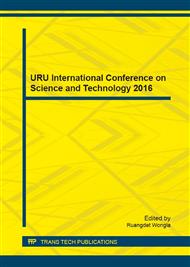p.137
p.143
p.153
p.159
p.165
p.171
p.178
p.184
p.188
Ultrasonic Signal Reconstruction Using Compressed Sensing
Abstract:
Ultrasonic signal reconstruction for Structural Health Monitoring is a topic that has been discussed extensively. In this paper, we will apply the techniques of compressed sensing to reconstruct ultrasonic signals that are seriously damaged. To reconstruct the data, the application of conventional interpolation techniques is restricted under the criteria of Nyquist sampling theorem. The newly developed technique - compressed sensing breaks the limitations of Nyquist rate and provides effective results based upon sparse signal reconstruction. Sparse representation is constructed using Fourier transform basis. An l1-norm optimization is then applied for reconstruction. Signals with temperature characteristics were synthetically created. We seriously corrupted these signals and tested the efficacy of our approach under two different scenarios. Firstly, the signal is randomly sampled at very low rates. Secondly, selected intervals were completely blank out. Simulation results show that the signals are effectively reconstructed. It outperforms conventional Spline interpolation in signal-to-noise ratio (SNR) with low variation, especially under very low data rates. This research demonstrates very promising results of using compressed sensing for ultrasonic signal reconstruction.
Info:
Periodical:
Pages:
165-170
Citation:
Online since:
October 2016
Authors:
Keywords:
Permissions:
Share:
Citation:


